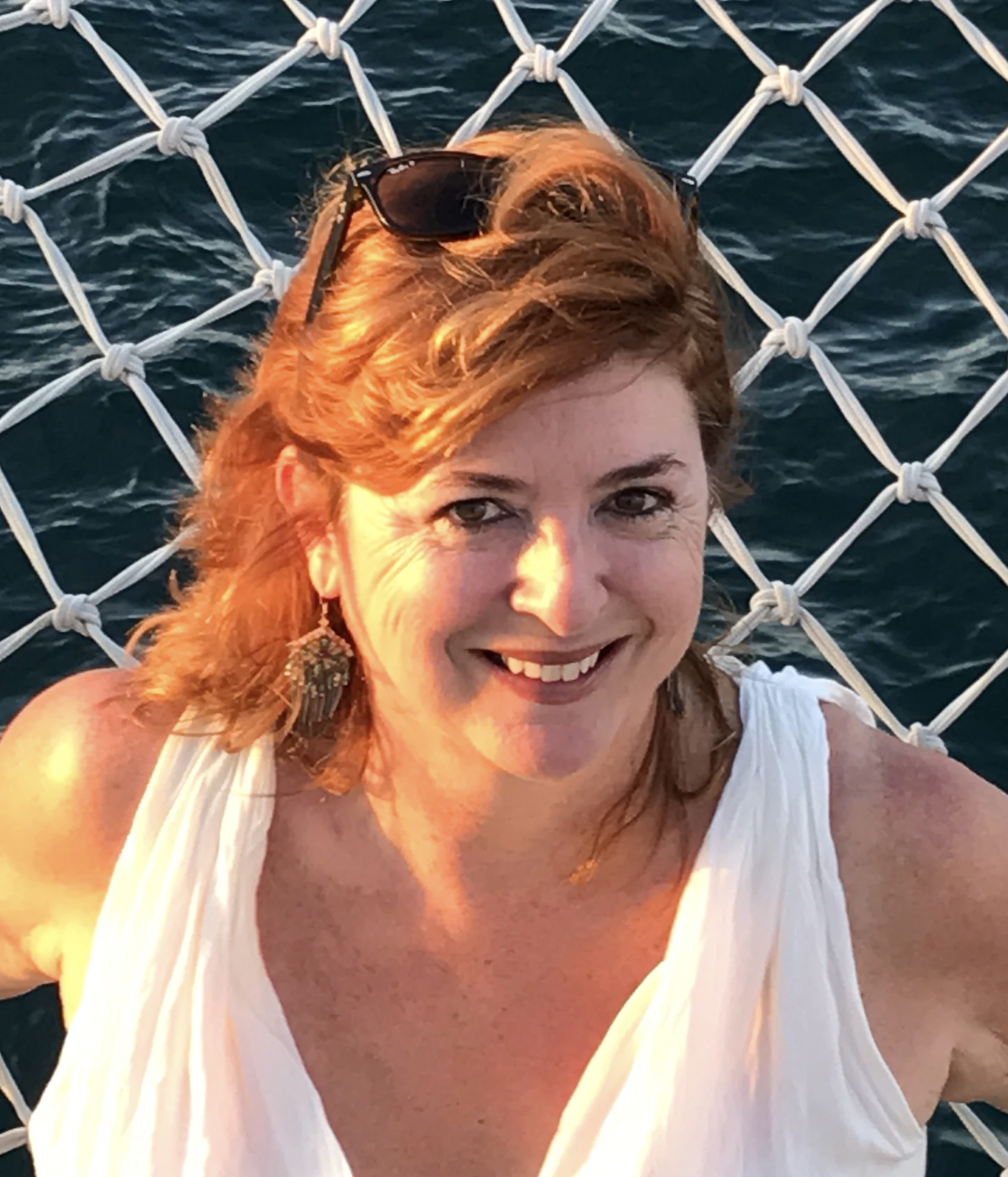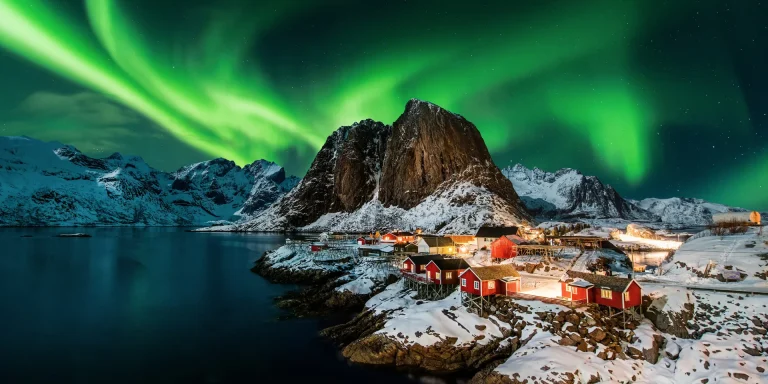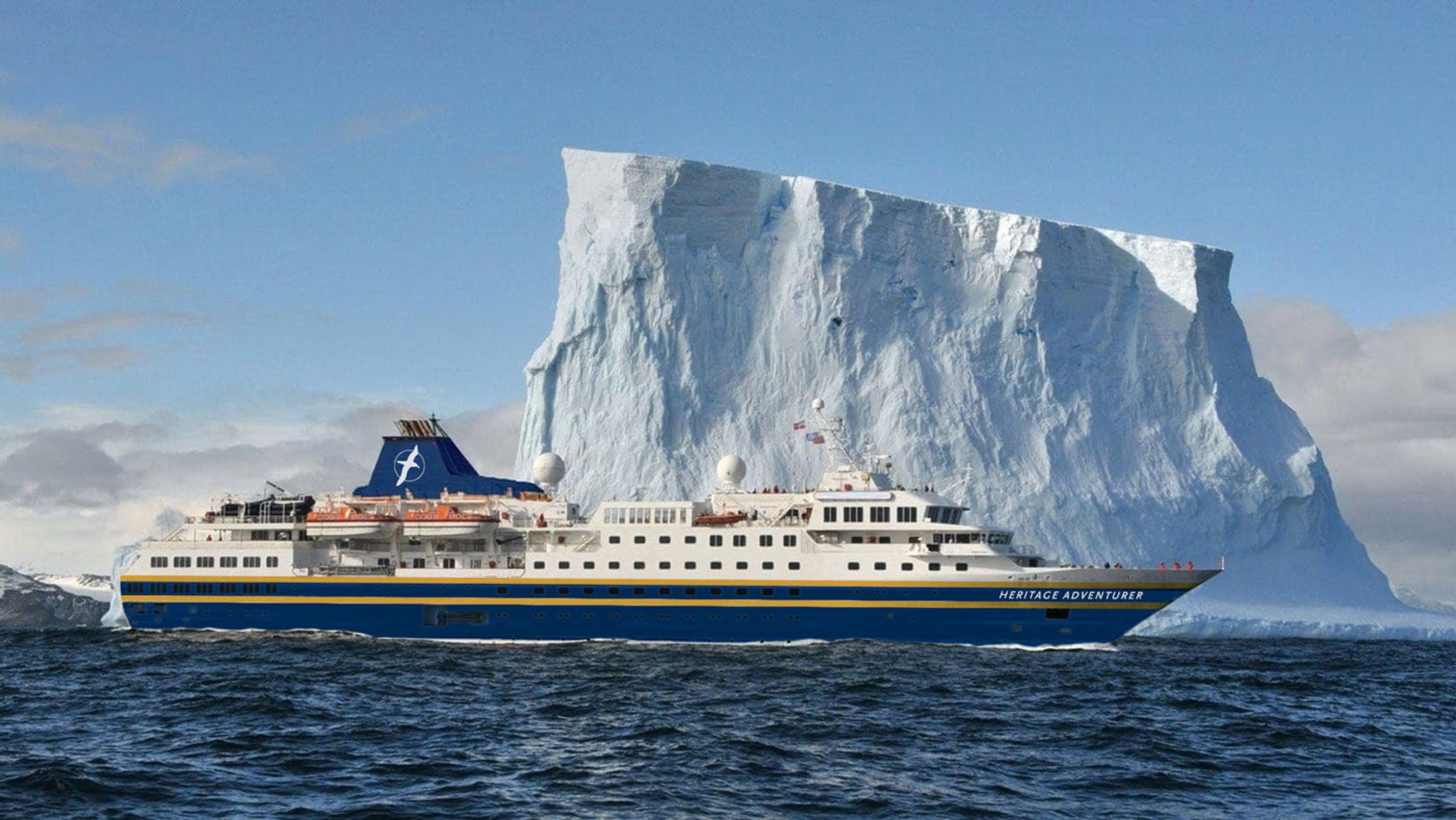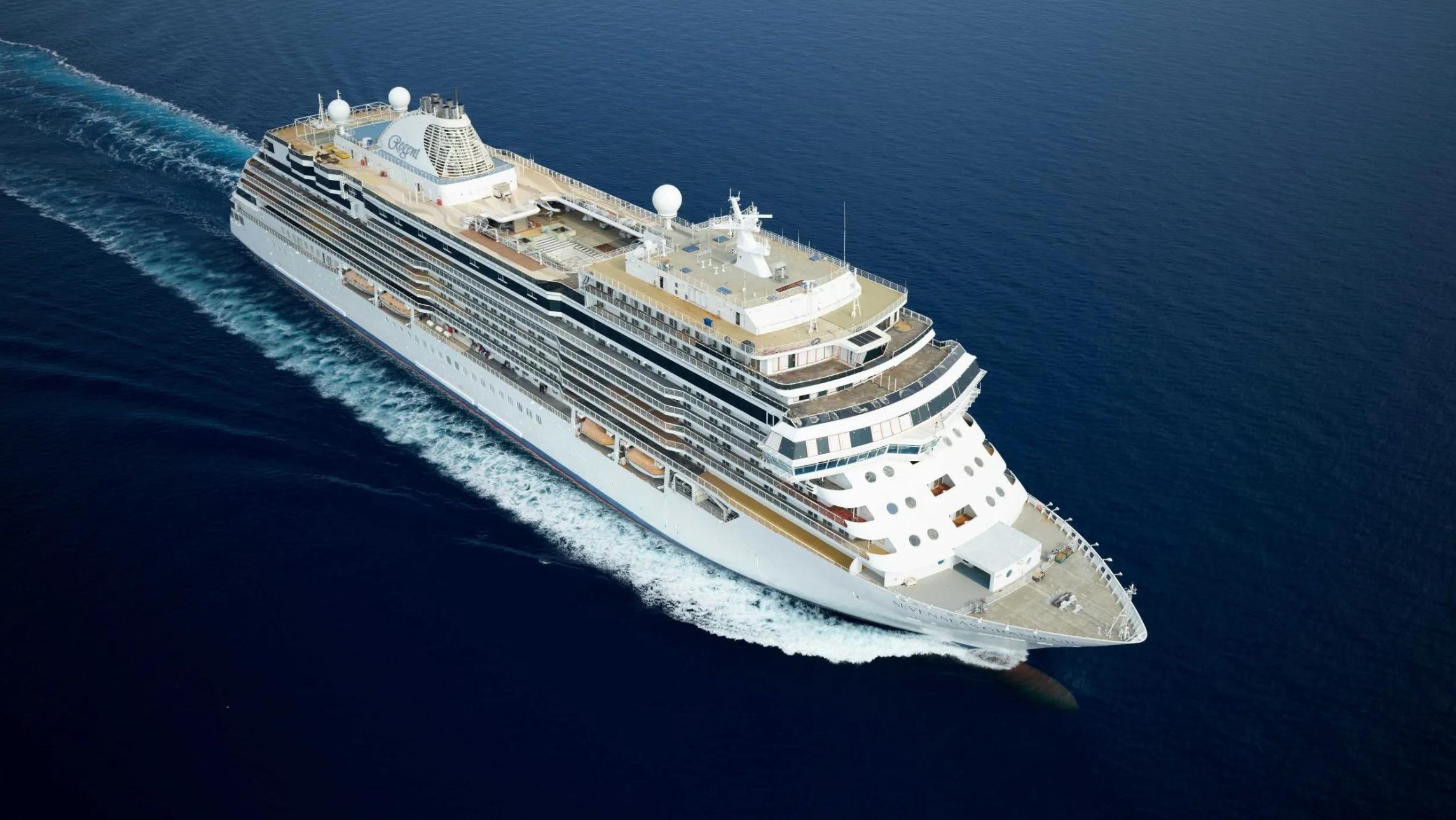While the Danes have their hygge – a sense of cosiness and comfort – Norwegians call it koselig. Things that are koselig include warmth, friendship, soft light, a cosy fire, good conversation, decent wine, reindeer throws, soft, knitted jumpers and a sense of welcome. The 528-passenger Maud embodies all of this.
Pre-pandemic, Hurtigruten launched two sleek new expedition ships, MS Roald Amundsen and MS Fridtjof Nansen, with hybrid power, balcony cabins, infinity pools and hands-on science centres. The plan was to refit some of the line’s older expedition ships, including the much-loved Midnatsol, which was built in 2003, to offer a comparable experience in the dining, the science centre and smartened up cabins. Midnatsol would be renamed Maud, in honour of Roald Amundsen’s beloved ship, named in 1917 after the then queen of Norway.
Hurtigruten also split its operation into two brands: Hurtigruten Expeditions, of which Maud is part, and the Coastal Express, the long-standing scheduled service along the Norwegian coast, calling at every tiny port between Bergen and Kirkenes.
Only part of the refit plan has come to fruition so far, as Covid and the global pause in cruising slowed down plans. Maud has some of the features of the newer ships, including the restaurants and science centre, but is now not due for full refurbishment until 2023. For 2022, until October, she will operate a series of expeditions from Dover taking in the Norwegian fjords, remote spots of the British Isles, the Arctic and Svalbard.
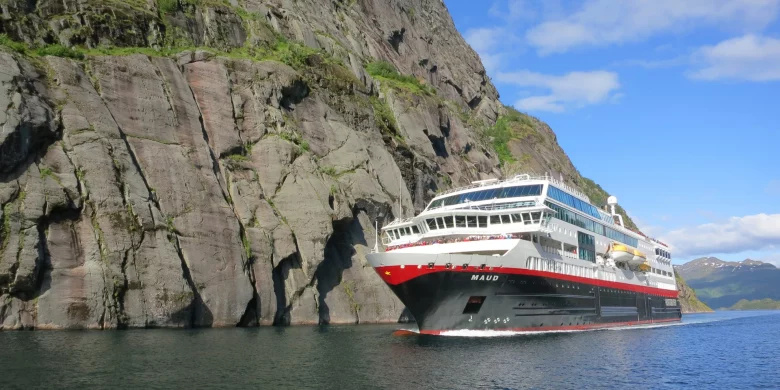 Don’t let this delay in the refit be a reason to postpone a trip. Maud is a gorgeous ship; a “ship with soul”, as more than one crewmember told me. Having sailed on both the Amundsen and the Nansen, I can see how much the design of those has been inspired by the former Midnatsol, from the light-filled six-deck atrium to the dreamy, forward-facing Explorer Lounge, with uninterrupted views.
Don’t let this delay in the refit be a reason to postpone a trip. Maud is a gorgeous ship; a “ship with soul”, as more than one crewmember told me. Having sailed on both the Amundsen and the Nansen, I can see how much the design of those has been inspired by the former Midnatsol, from the light-filled six-deck atrium to the dreamy, forward-facing Explorer Lounge, with uninterrupted views.
The décor on Maud in its current form is warm and welcoming; wood panelling, models of old Hurtigruten coastal voyage ships, nautical artefacts and art deco touches. The colour schemes are soothing, from the tan leather chairs and warm wood in the Lindstrøm restaurant to the aqua and blue combination in the Explorer Bar.
There are three restaurants, exactly in line with the dining arrangements on the newer ships. In Aune, the main dining room, the menu reflects the cuisine of the Norwegian coast, so expect plenty of fish, berries, fresh vegetables, seafood and game, from venison to reindeer. While Aune would normally be buffet style, with dishes pre-plated, for now it’s waiter service only, because of Covid restrictions. Red, white or rosé, without exception excellent for pouring wine, is served generously with meals.
Suite guests dine in the posher Lindstrøm (named after Roald Amundsen’s personal chef), where the menu changes every two days and there’s a cosy, intimate feel with the level of service you’d expect from a restaurant with fewer than 30 covers. Because of social distancing measures in place, Lindstrøm currently has two sittings, 6pm and 8pm, although we managed to get in at 7.30 most nights.
The food in here really is exceptional, easily rivalling that of the luxury lines for its inventiveness. An amuse bouche of whipped Stilton with roast cauliflower was divine, as was the cured halibut and seafood risotto. If you’re not in a suite, it’s worth paying the €25 per person cover charge to eat in here a couple of times during your cruise.
Fredheim, the comfort food restaurant, serves an eclectic menu of burgers, grilled salmon, chicken, steak, dumplings, potato waffles with different toppings, king crab rolls and pasta. Milkshakes are a big deal here, in flavours from chocolate to blueberry and cloudberry, the golden berries that grow in the Arctic. You can pep them up with a boozy shot for an extra €5. The dessert menu features waffles, crêpes and ice cream. You’ll need the daily hikes after a few sessions in Fredheim.
There are plenty of distractions during sea passages. The expedition team works hard, delivering lectures on anything from marine mammals to Viking history, astronomy and geology, with occasional workshops during which you can try watercolour painting or learn photographic techniques. Hurtigruten has a partnership with British marine mammal conservation charity ORCA, so there’s an ORCA surveyor on deck all the time during daylight hours, logging whale and dolphin sightings.
All sorts of other citizen science projects are on offer, from recording birds via the E-Bird app, or studying cloud formations using a NASA app. There’s a smart lecture theatre with raked seating, in my opinion far superior to the lecture areas on the newer ships, and a light-filled workshop room for smaller sessions. On deck eight there’s also a ‘history corner’, displaying old Norwegian clothing, maps, books and sealskins.
While Maud is more of an indoor ship, originally built for the Coastal Express service, there’s plenty of open deck space, with two hot tubs, a sheltered barbecue area and on deck six, a wraparound promenade. There’s also a tiny gym and two enticing glass-walled saunas.
Cabins are the area that will benefit most from the refit. Most are compact, with a big porthole and beds in an L shape that convert to sofas for day use. They’re certainly comfortable, and well kitted out (the Arctic Pure bathroom goodies are lovely) but are not luxurious. The upper deck suites, on the other hand, are magnificent, with oodles of space and a wonderful bay window in which you can sit and watch the scenery, as well as the rare luxury of a bathroom with a bathtub. Even bigger suites are located aft on decks seven and eight, with balconies, and get snapped up very quickly.
Where Hurtigruten Expeditions really differentiates itself from the Coastal Express is in the included activities. Guided hikes of varying difficulty, kayaking and exploration on the ship’s RIBs, as well as more conventional sightseeing are all part of the fun. The expedition team also take out Dora, the ship’s underwater drone, which beams back high-definition footage of the marine world. Most excursions are included; on the round-Britain cruises, expect daily hikes, distillery visits, castle tours and a landing on St Kilda, the remotest of the Hebrides, now inhabited only by birds.
All this daytime activity means that evenings are quiet. There were a couple of later evening talks on my cruise, and always a few die-hards in the bar, but most people retire after dinner and there isn’t any live music beyond the occasional folk singing session. The ship is also not really orientated to families, although there’s certainly plenty for kids in the shore excursions.
Most passengers are couples over 55, with a smattering of solo travellers. On the sailings from Dover, most of the passengers are Brits (sister ship Otto Sverdrup operates a similar expedition from Hamburg for the German market). The round-Britain itineraries in summer are likely to attract a more international crowd but either way, the atmosphere on board is happy and convivial, thanks to the friendly, experienced crew and the enthusiastic expedition team. If koselig means more to you than casinos and kids’ clubs, this is the perfect way to explore northern Europe in summer.
Need to know:
Cruise line: Hurtigruten Expeditions
Ship: MS Maud
Launched: 2003
Star rating:
Tonnage: 16,151
Passenger decks: 7
Passenger capacity: 528
Crew: 75
Highs: Cosy, convivial ship with superb crew and excellent food
Lows: Smallest cabins are very compact; very little evening entertainment
Verdict: The ideal vessel for expedition cruising with near all-inclusive pricing

